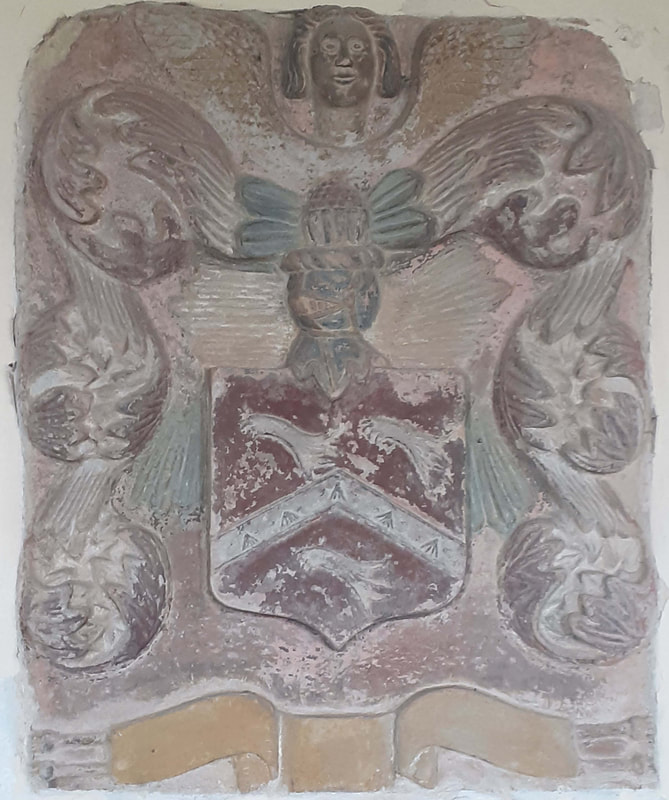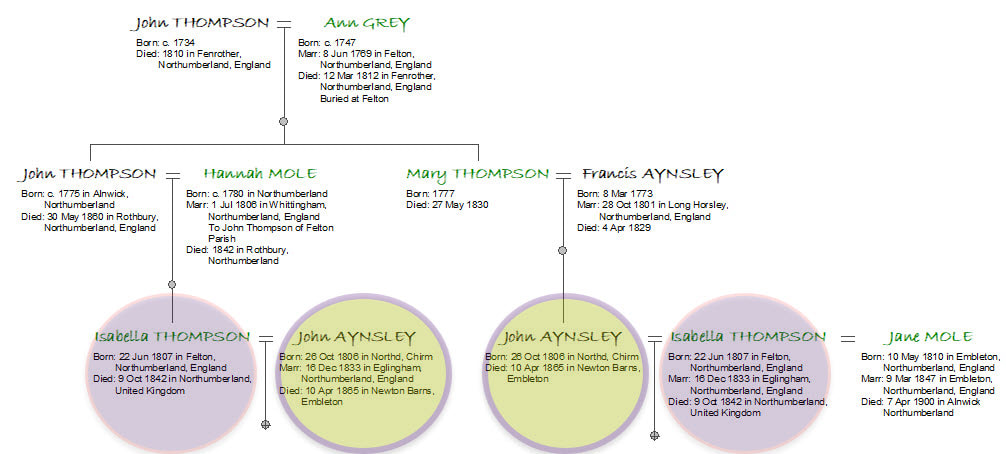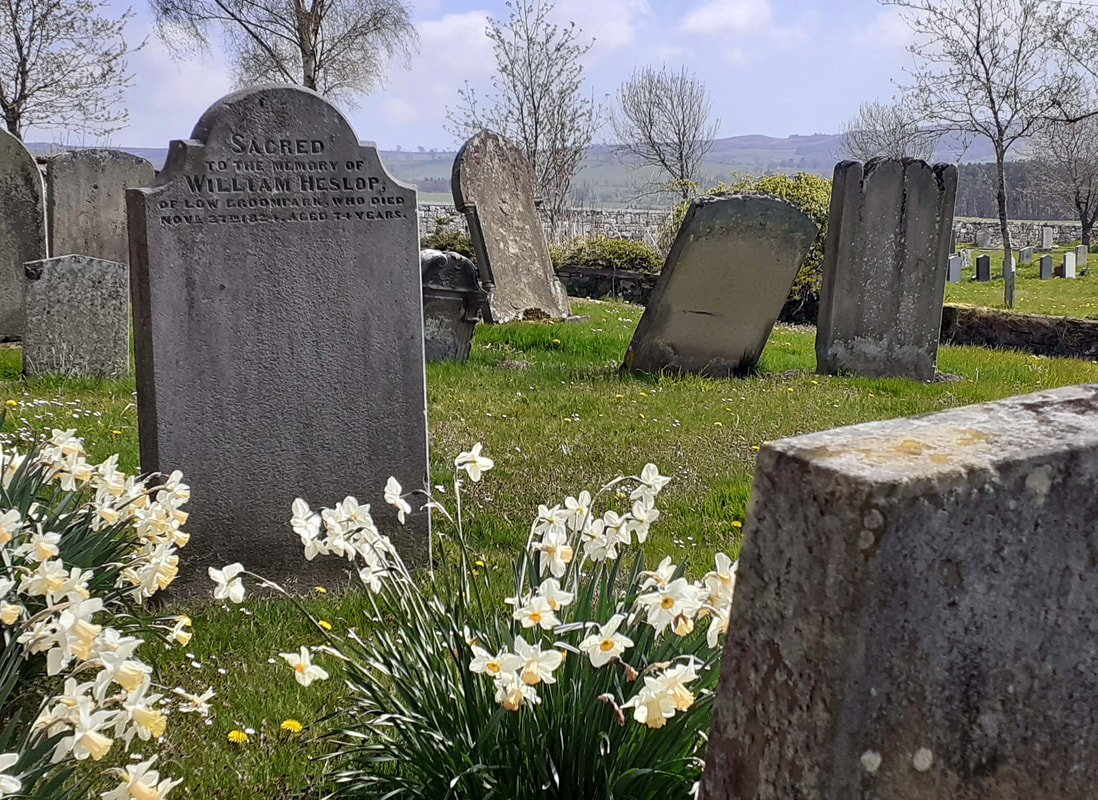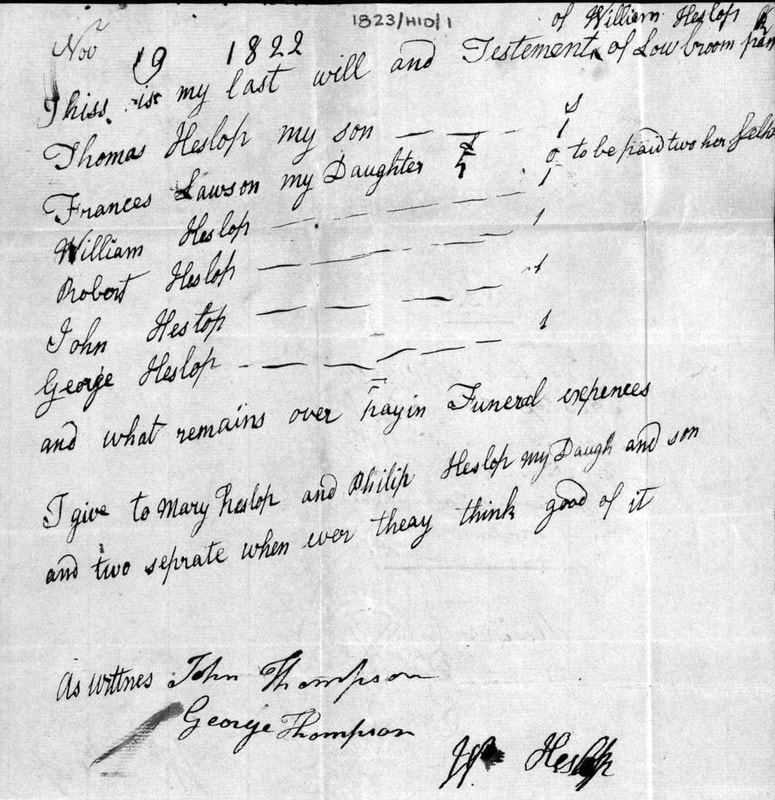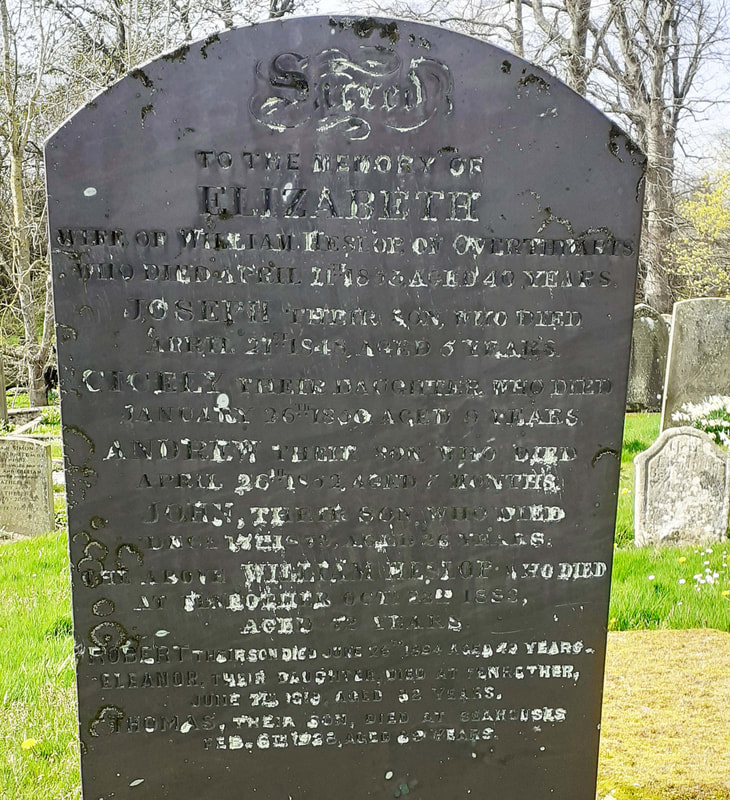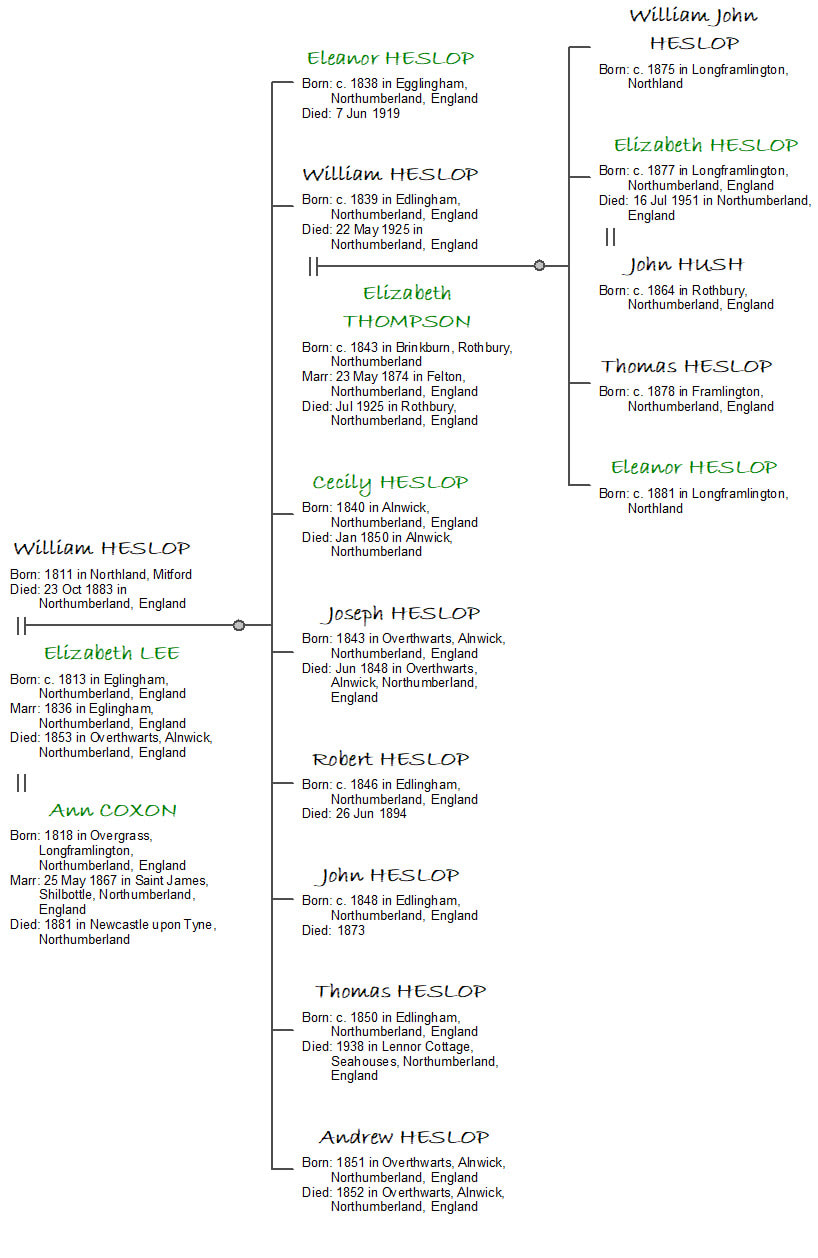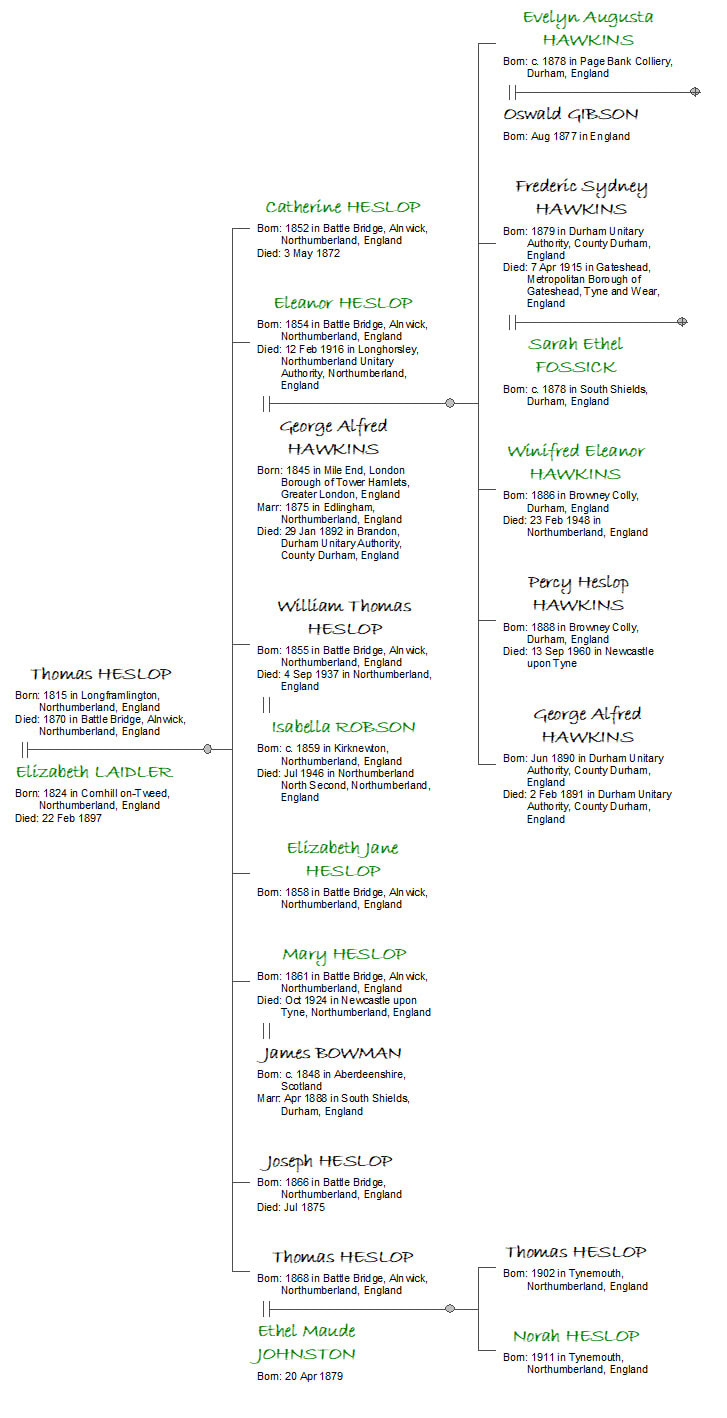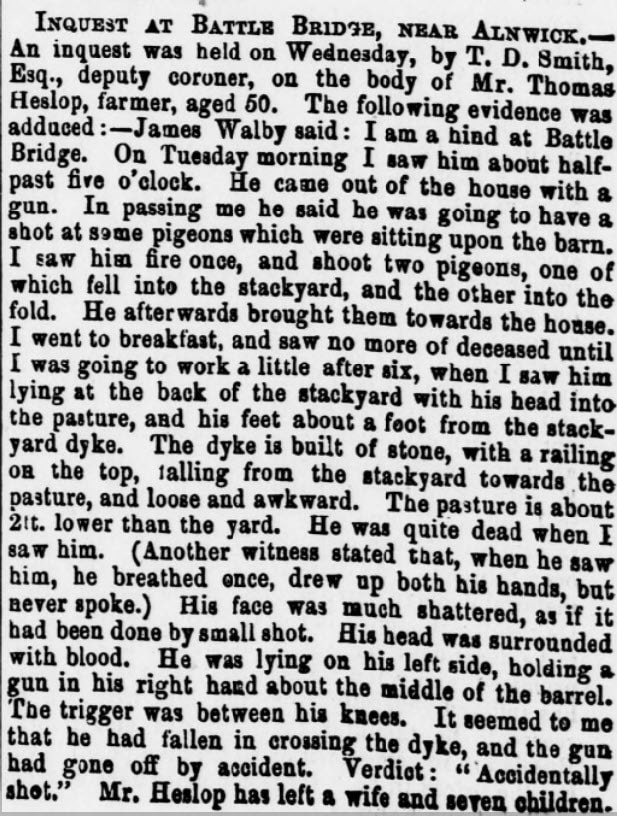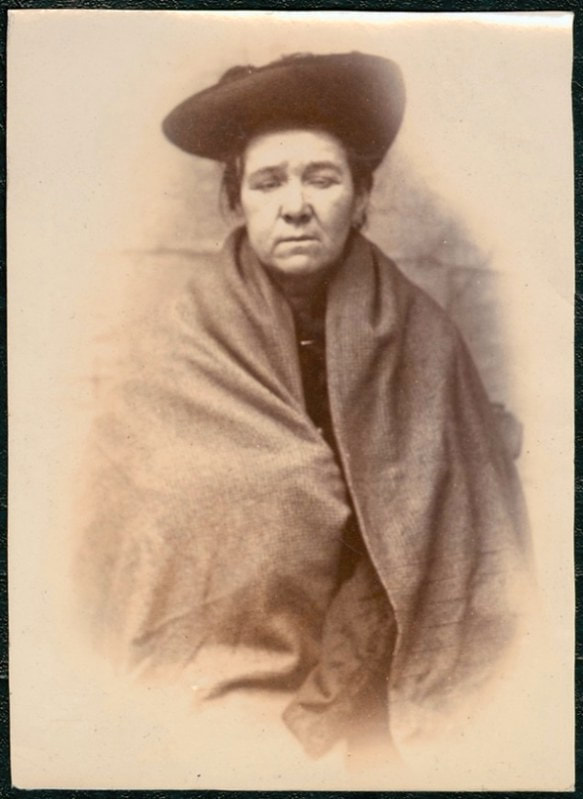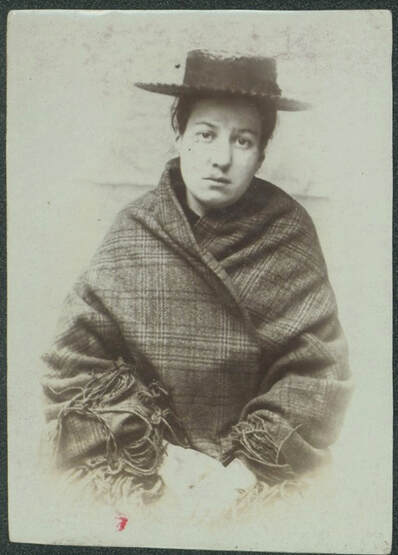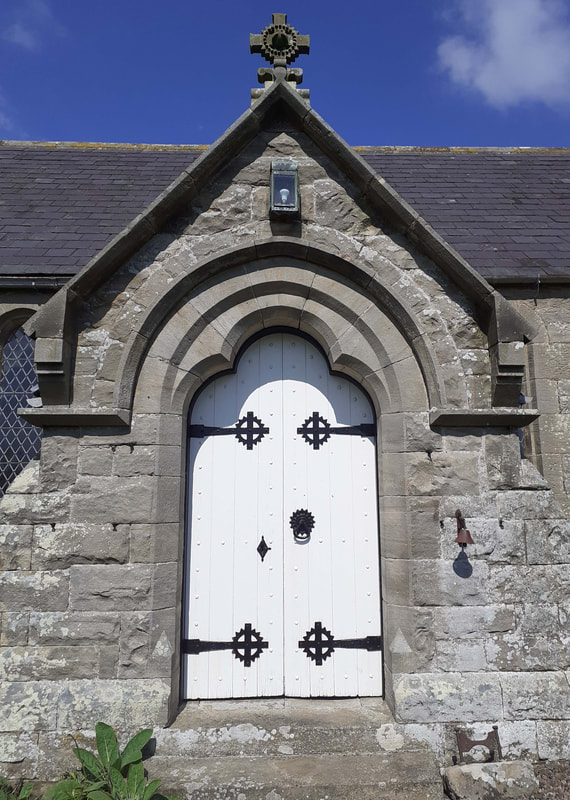The. v. daye of Septembre his Lordshyp in his approchynge nyghe to Sheltered to the north by Titlington Pike, to the Northeast by Jenny’s Lantern and to the East by Brislee Wood and Alnwick Moor, Bolton Chapel looks south over rolling farmland and west towards Cheviot. A peaceful pastoral scene but the ground on which it stands is saturated with centuries of history. A muster point for the English army en route to Flodden in 1513 is amongst the many events it witnessed. The Chapel is one of the 24 local sites featured by the Flodden Ecomuseum created to mark the quincentenary of the Battle. A comprehensive overview of its history can be freely downloaded from Flodden 1513 ‘Legends and Legacy’ website. But Bolton is also the final resting place of members of the Heslop family, the subject of this month’s blog. As DNA ‘wish lists’ go, mine may be a little ambitious. Looking for clues to the predecessors of John Thompson, a 5th great grandfather who died in 1810, I continue to investigate associated connections whenever I get an opportunity. Time spent bringing a family tree forward to the present is as beneficial to the understanding of our ancestral heritage as pushing back further into the past. Establishing names of living descendants in collateral lines not only helps identify matches with little or no family tree, but also provides names of potential testers. Investigating collateral lines invariably unearths some interesting characters and stories along the way too. I have a good DNA match for the genetic distance (29 cMs) with a descendant of Margaret Thompson, one of the nine daughters of John Thompson and his wife Ann Grey. Margaret was also the wife of William Hogg famer at South Acton, Buckton and Kyloe and in last month’s blog I mapped out some of William’s earlier ancestors. Not as it would necessarily provide me with answers to my Thompson mystery, but for interest and to check for undetected cousin marriages that might influence subsequent DNA theories. This branch of the family, like many other farming families in the region, intermarried many times. Intermarriage between cousins has the potential to distort the amounts of DNA shared between matches. Research on the Hogg line to date does not suggest any earlier connections, therefore the DNA that I share with my 5c1r is likely to be DNA we have inherited from our mutual Thompson/Grey ancestors. To confuse things slightly, John Thompson and his wife Ann Grey are a set of my 5th great grandparents twice over. This is due to a marriage between two of their grandchildren, Isabella Thompson and John Aynsley who were first cousins. After Isabella’s premature demise in 1842, John Aynsley married her 1st cousin, Jane Mole. John Thompson is buried at Felton with his wife Ann Grey (d. 1812) and three of their eleven children; William (d. 1783 aged 2,) Isabel (d.1787 aged 3) and Ann (the first of the name who died in 1788 aged 15.) Of the remaining 8 children there were 7 daughters and one son, John Thompson junior. Their son John Thompson junior, married Hannah Mole at Whittingham in June 1806 and are also 4th great grandparents. Of their seven remaining daughters:
William Heslop was born at Marwood, near Barnard Castle in 1778. At some point following the death of his mother, Mary Jervais, at Barnard Castle in 1792, he and his siblings moved north as children with their father William Heslop senior. William senior died at Low Broome Park, Bolton, where he was a tenant, in 1824. A memorial to him appears on the reverse of the headstone for his son Thomas. It stands in a prominent position close to the path in the Chapel graveyard. His Will of 1823 is one of the briefest I have seen. The witnesses to his meagre bequests were a John and George Thompson, who had not dissimilar hands. Whilst the Will proved little, the associated probate bond provided enough information to confirm that John Thompson was a farmer at Titlington, a 4th great grandfather to me and therefore brother to Eleanor Thompson his daughter in law. But who was George Thompson, farmer at Shawdon Hill? He isn't a brother to John but could some level of kinship have existed between them? If so, it has yet to be determined. There is certainly a George Thompson baptising children at Sion Meeting House (Presbyterian) in Alnwick around the same time as John Thompson Senior of Overshiels. A connection is possible, but typically, their non-conformism is hampering progress. Children of Eleanor Thompson and William Heslop William and Eleanor had four sons: William b.1811, John b 1813, Thomas b. 1815 and Robert b. 1817. The youngest, Robert, died aged 4 in November 1821. Son John, although he married an Elizabeth Wharrier who had a daughter that took his name after marriage, the couple had no children of their own. If there were to be any living descendants, they would stem from offspring of brothers William and Thomas. William Heslop junior of OverthwartsIn 1836 William Heslop junior married Elizabeth Lee by Licence at Eglingham, witnessed by Elizabeth’s mother Cecily and William’s brother John. By 1841 three children had joined the family in Overthwarts Farmhouse on Alnwick Moor (these days a stylish holiday home), Eleanor b.1838, William b.1839 and Cecily b. 1840, who died in 1850. A further five sons were born to the couple between 1843 and 1851: Joseph b.1843, Robert b.1846, John b. 1848, Thomas b. 1850 and Andrew b.1851. Joseph died aged 3 in 1848 and Andrew aged 7 months in 1852. Their mother Elizabeth followed in April 1853. In 1867 William Heslop married his cousin Ann Coxon, daughter of his mother’s sister Sarah Thompson, and her husband Robert Coxon. Nonetheless, with five children surviving to adulthood, there ‘should’ be plenty of living descendants with clues to the Thompson family history lurking in their DNA. But how wrong could I be! John Heslop left farming and became a Grocer near Tynemouth. He died unmarried in 1873. Brothers Thomas and Robert farmed at Fenrother and both also died unmarried. Robert in 1894, and Thomas at Lennor Cottage, Seahouses in 1938. Sister Eleanor was another sibling not to marry. The only one of the five surviving children to wed was William, who married an Elizabeth Thompson at Felton in 1874. Was she a cousin? Initial research suggests her father was John Thompson, a farmer at Elyhaugh and her mother Elizabeth Coxon. Confused? Me too! A further foray into the Coxon lineage is required to establish clarity. William Helsop junior and Elizabeth Thompson farmed at Low Town, Longframlington. Only one of their four children, daughter Elizabeth, married. She and her husband John Hush, farmed at neighbouring High Weldon. No children also marks the end of this branch of the Heslop family. Summary: 8 Children 4 grandchildren = no living descendants. Thomas Heslop of Battle Bridge The Banns were read for Thomas Helsop's marriage to Elizabeth Laidler, daughter of Joseph Laidler, farmer at Haigsfield, Berwickshire, at Eccles in the Spring of 1851. They coincided with those for the marriage of Elizabeth’s sister Grace to Edward Donkin. (Edward was 1st cousin to the unfortunate Barbara Collin Donkin, killed by lightning at the home of her Uncle, Ralph Carnaby, on the eve of her own marriage in 1837.) The minister of Cornhill married both couples on 3rd June. It is interesting to note that Joseph Laidler was a native of Edlingham – an example of the fluidity of movement in both directions across the Border. Already farming at Lemmington Bank at the time of his marriage, by 1861, Thomas had taken over the tenancy of Battle Bridge from his uncle Philip Heslop. Between 1852 and 1868 he and Elizabeth Laidler had seven children:
The Heslop family’s time at Battle Bridge was cut short following a tragic shooting accident. Thomas had set out early one morning in June to shoot pigeons but was found dead soon after breakfast. The inquest returned the verdict of ‘accidentally shot’. Thomas lies buried at Bolton, alongside his wife and children Catherine and Elizabeth. He clearly enjoyed the old traditional field sports too. In January of the same year he attended the inaugural meet of ‘Major Brown’s Foxhounds’ at Lesbury House in the company of his Hogg and Coxon cousins and many other Northumberland farmers. It was a good day for both humans and foxes alike. Following a hearty breakfast ‘a la fourchette’ with ‘ale and wine liberally provided for all comers,’ the hounds drew ‘a wide extent of country without success and were finally taken off to kennels at Powburn.’ Thomas witnessed a piece of history in the making. Some of the hounds purchased by Major Browne in 1870 feature in the pedigrees of the present Percy pack. A full account of the day features in the Saturday 8th January 1870 edition of the Alnwick Mercury, available through the British Newspaper Archive. Elizabeth and her children, some still very young, continued to live and farm at Battle Bridge for a few years following Thomas' death. In August 1873, a notice appeared in the newspaper suggesting she began the process of winding up his affairs. By the time of the 1881 census Battle Bridge was in the hands of Robson Turnbull, a Scottish born Shepherd and former employee at Titlington Mount. Elizabeth and her youngest daughter Mary Ann had moved to Whitley Bay, then little more than a village known simply as Whitley. In 1891 she was living with sons, William and Thomas, in Prudhoe St, in the Chirton area of North Shields. Son William was a Grocer and Thomas a Draper. His drapery business appears to have grown to a substantial size with premises at 1,3 and 5 Saville Street and 104 Bedford Street, North Shields. In 1906 he made the Shields Daily News when seven shirts were stolen from his shop door in Saville Street by Ellen Leavy and her daughter Rose Sparrow. Thomas was not the only victim of the light-fingered pair. A child’s dress, a shawl and four pairs of boots taken from various other establishments also made up their haul. The sentence passed by the magistrate was a month’s imprisonment. At the hearing Thomas was commended by the Chief Constable for assistance in the arrest. He was then admonished by the magistrate along with his fellow shopkeepers, for displaying their wares outside unattended. Summary: 7 children, 14 known grandchildren, 7 great grandchildren = 1 family with living descendants. ConclusionAm I any nearer to unearthing my Thompson ancestors? Whilst the exercise hasn’t provided any direct answers, it has provided several clues for future enquiry.
Of all the information gleaned from this exercise, the most important is the understanding as to why there are no DNA matches on the Heslop line of descent. Barring one or two unknowns the line is reduced to just one branch of a family and two or three individuals. The question is, are they interested enough in their family history to respond to contact made with them? Here is hoping the answer is yes. LinksMore information on other sites, near and far, that make up the story of Flodden along with other articles pertaining to archaeological and documentary finds uncovered as part of the HLF funded project, can be found at Flodden 1513 ‘Legends and Legacy’,
https://www.flodden1513ecomuseum.org/places/local/bolton-chapel For readers interested in photos of the criminally minded, Tyne & Wear Archives have made their collection freely available online.Tyne and Wear Archives photostream hosted by flickr https://www.flickr.com/photos/twm_news/22669115693/in/album-72157628700735401/ Some of the images have been sorted into collections such as Criminal Faces of Newcastle, https://picryl.com/collections/criminal-photos-newcastle
0 Comments
|
AuthorSusie Douglas Archives
August 2022
Categories |
Copyright © 2013 Borders Ancestry
Borders Ancestry is registered with the Information Commissioner's Office No ZA226102 https://ico.org.uk. Read our Privacy Policy
